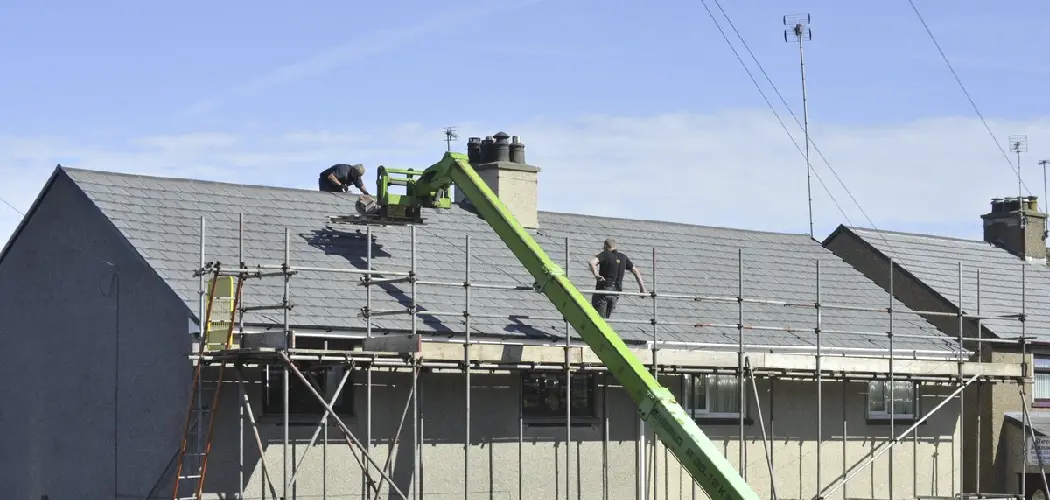Garages are an integral part of any home, serving a variety of useful purposes that range from convenient storage to providing shelter for our cars.
Unfortunately, the roofs of many garages can start to sag over time due to water damage or structural issues – and this can have a damaging effect on the overall security and integrity of your home if left unchecked.
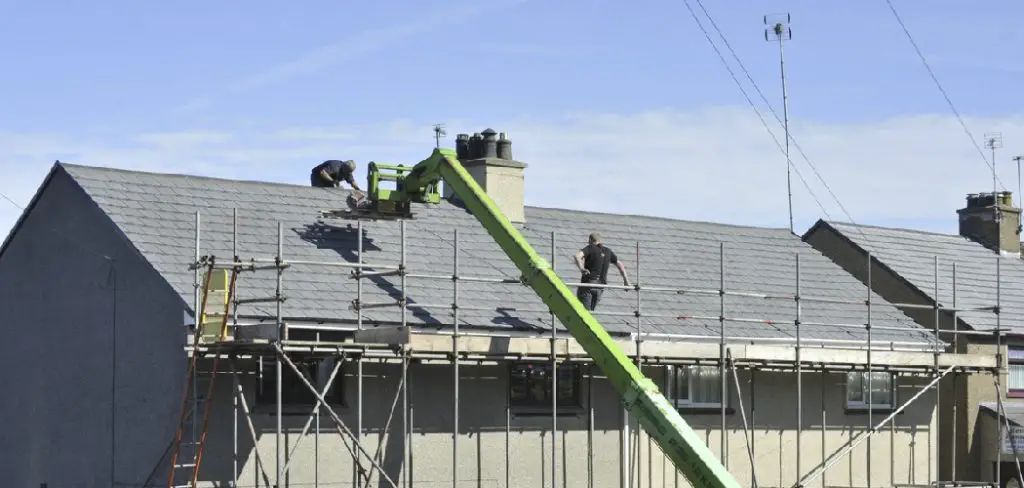
But don’t fret – in this post, we’ll walk you through how to fix a sagging garage roof with simple steps that anyone can complete in an afternoon. Read on for easy tips and tricks on getting your garage back into tip-top shape!
Summary: A sagging garage roof can be a real nuisance and should be fixed as soon as possible. The first step is to identify what is causing the sagging, which could be due to a lack of support, damage from moisture or weather, or even an aging roof. Repair the sagging roof, may require replacing some of the garage door wires and brackets.
Will a Sagging Roof Collapse?
A sagging garage roof can certainly be an eyesore and a danger. But how likely is it that a sagging roof will collapse?
The answer to this question depends on the severity of the sagging and the quality of the materials used in construction. Generally, if your garage roof has only started to sag recently, then the risk of collapse is low. However, if the sag is severe and has been present for some time, then the structural integrity of your roof may be compromised, and a collapse could occur.
It is important to take action quickly when you notice any signs of sagging in your garage roof. Even if there isn’t an immediate risk of collapse, the longer you wait to repair the problem, the worse it could get. If a collapse does occur, then it could cause serious damage and even injury.
If you think your garage roof may be sagging, then it’s best to consult a professional contractor as soon as possible. They will be able to assess the situation and advise you on the best course of action.
It is usually simpler and less expensive to repair a sagging roof than it is to replace it, so don’t hesitate to get help. Taking swift action when you notice signs of a sagging roof can save you time and money in the long run, as well as prevent any potential risks to safety.
10 Methods How to Fix a Sagging Garage Roof
1. Inspect the Roof
The first step is to inspect the roof and identify the source of the problem. Common causes of a sagging garage roof include leaks, damaged shingles, and poor ventilation.
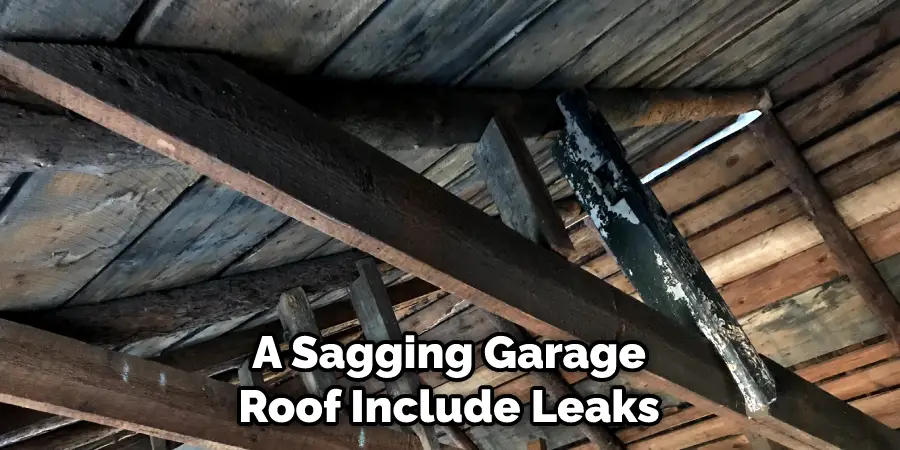
Once the source of the problem has been identified, it can be addressed accordingly. If the problem is due to a leak, the first step is to locate and repair it. If the shingles or sheathing have been damaged, they may need to be replaced. Poor ventilation can cause moisture buildup, which can lead to sagging and should be addressed as well.
2. Repair any Leaks
If there are any leaks in the roof, they should be repaired as soon as possible. Leaks can cause extensive damage to the roof and lead to further sagging. To repair a leak, you will need to patch the hole with a sealant or replace the damaged shingle.
If the damage is extensive, it might be best to hire a professional roofer. If you are unsure of how to go about repairing a leak, it is best to call a professional. Although it might be more expensive than doing the repairs yourself, it is important to get the job done right.
3. Replace Damaged Shingles
If there are any damaged shingles on the roof, they should be replaced as soon as possible. Damaged shingles can allow water to enter the home, which can cause further damage to the roof and lead to further sagging.
To replace shingles, use a pry bar to carefully remove the damaged shingle and then place a new one in its place. Secure it with roofing nails and then apply a new layer of roofing cement to ensure the shingle is sealed. Be sure to check for any other damaged shingles while doing this.
4. Improve Ventilation
Poor ventilation is one of the most common causes of a sagging garage roof. To improve ventilation, you will need to install additional vents in the attic or soffit. Make sure to use proper insulation and prevent any drafts from entering the garage. This will help reduce humidity and moisture, which can damage your roof over time.
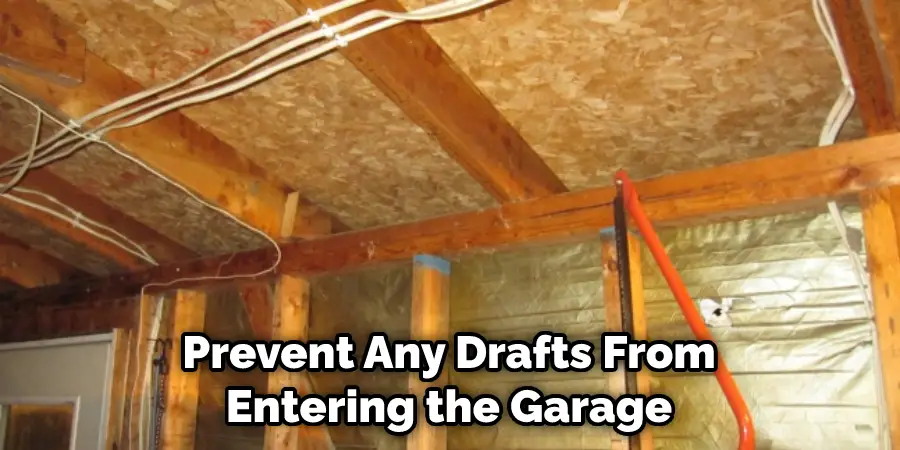
Additionally, if you’re replacing an old roof, you should make sure to use a material that is designed to be more breathable and prevent moisture buildup. This will help to stop the sagging and make sure that your roof lasts longer.
5. Reinforce Trusses
If the trusses are not properly reinforced, they can cause the roof to sag. To reinforce trusses, you will need to add additional supports such as braces or straps. Braces are typically used to strengthen a truss that has already been weakened due to age or damage. Straps, on the other hand, can be used to provide extra support for a truss that has not been weakened.
When adding braces or straps, make sure they are properly secured and fastened to each truss. Additionally, make sure the braces or straps are properly spaced and secured at the correct angle so that they can provide maximum support. Once the additional support is installed, it should help to reduce and/or eliminate any sagging in the roof.
6. Add Additional Supports
If there are no additional supports available, you may need to add your own. This can be done by installing posts or beams underneath the joists or by attaching brackets to the wall studs. This will provide extra support for the roof and help prevent it from sagging further.
Additionally, you may want to consider adding rafters or trusses to provide additional support for the roof. This can help ensure that the roof does not sag any further and remains in good condition for years to come.
However, it is important to make sure that the additional supports you install are secure and rated for the weight of the roof. Additionally, when attaching brackets to the wall studs, make sure the screws are long enough to penetrate the studs and provide a secure fit. If necessary, consult a professional contractor to ensure the additional supports are installed correctly and safely.
7. Remove Snow and Ice
If there is a lot of snow or ice on the roof, it can cause it to sag. To remove snow and ice, you will need to use a shovel or an ice pick. Be careful not to damage the shingles while you are removing snow and ice from the roof.
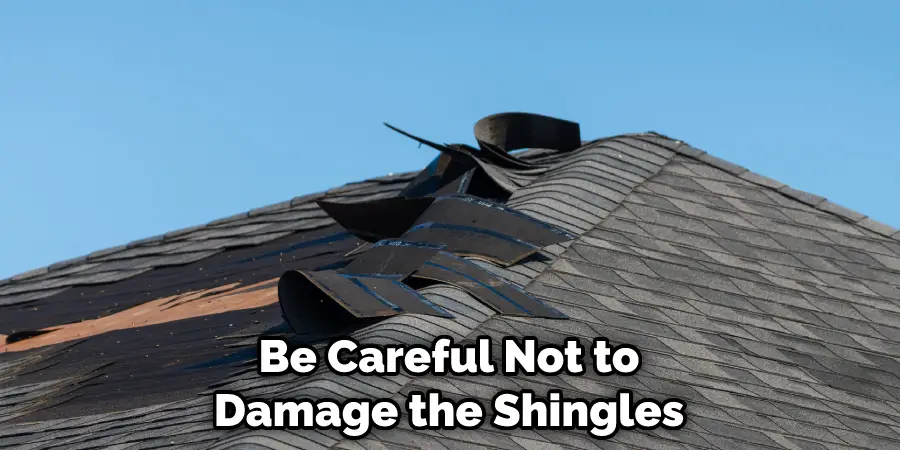
Make sure to wear gloves, as the cold temperatures can cause frostbite. After removing all of the snow and ice, inspect the roof for any damage that may have been caused by the ice and snow. If there is any damage, be sure to repair it before doing anything else.
8. Use a Support System
If you cannot fix the problem yourself, you may need to use a support system such as scaffolding or jacks. This will help to take some of the weight off of the roof and prevent further sagging. You should always have a professional contractor install any kind of system that you choose. Try to find a contractor who specializes in roofing work.
They will be able to properly assess the situation and provide you with the best advice on how to fix the problem. Make sure to follow their instructions carefully so that the system is installed correctly and safely. Once the support system is in place, you should see the roof start to return to its original shape. Your garage will be back in action in no time!
9. Install a New Roof
If the roof is beyond repair, then it may be necessary to install a new one. This can be done by hiring a professional roofing contractor. They will be able to assess the roof and recommend the best materials for the job.
They will also be able to advise on any structural improvements or changes that need to be made in order to ensure the roof is safe and secure. Once the new roof is installed, it should remain free from sagging for many years to come.
10. Maintain the Roof Regularly
To prevent future sagging, it is important to maintain your roof regularly. This can be done by inspecting the roof for signs of wear and tear, repairing any leaks or damaged shingles, and keeping the eaves clear of debris.
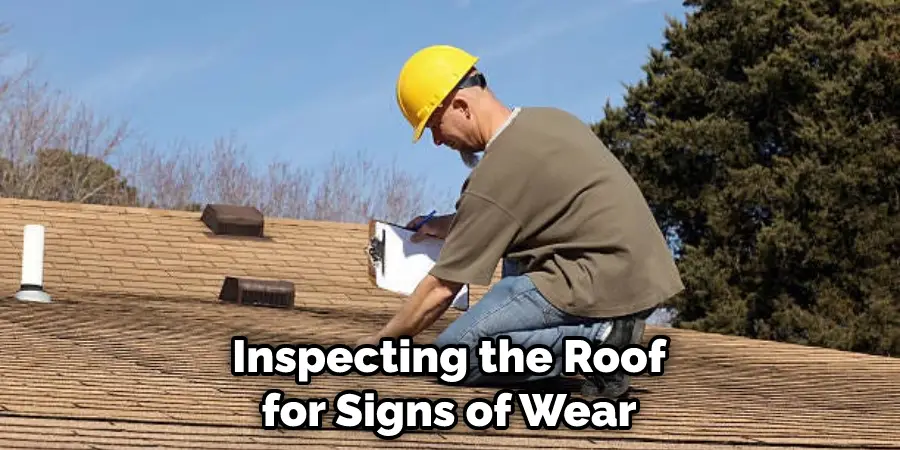
Additionally, you may want to consider applying a protective sealant every five years. This will help protect your roof from the elements and keep it looking great. By taking the time to properly maintain your garage roof, you can help ensure that it lasts for many years to come.
Conclusion
A sagging garage roof is a problem that can be fixed by following the proper steps. By doing so, you will be able to extend the life of your garage and avoid any further damage to your home. It’s important to take care of your garage roof, especially if you live in an area with extreme weather conditions.
Replacing a sagging garage roof is not as difficult as it may seem, and following these simple steps on how to fix a sagging garage roof will help ensure that your garage stays in good condition for years to come. Thanks for reading! We hope this was helpful.
I am Rick. I grew up helping my dad with his handyman service. I learned a lot from him about how to fix things, and also about how to work hard and take care of business. These days, I’m still into fixing things- only now, I’m doing it for a living.
I’m always looking for new ways to help people grow and develop. That’s why I have created this blog to share all my experience and knowledge so
that I can help people who are interested in DIY repair.

